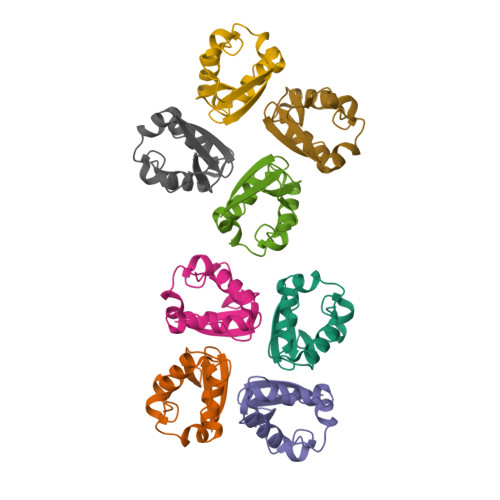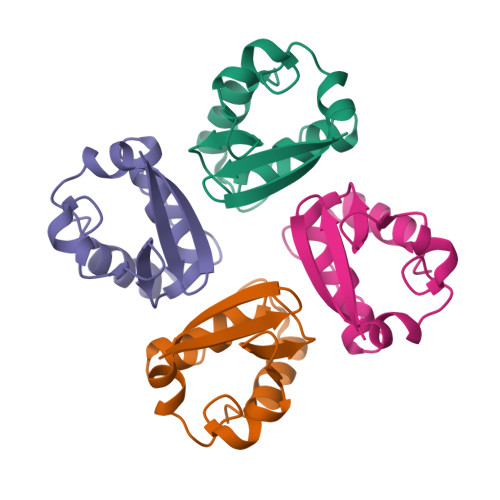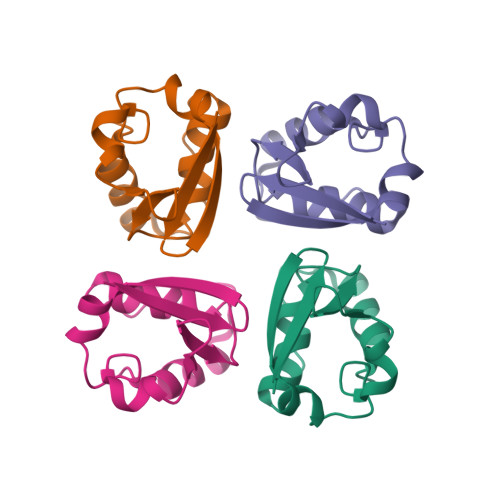The polar T1 interface is linked to conformational changes that open the voltage-gated potassium channel.
Minor, D.L., Lin, Y.F., Mobley, B.C., Avelar, A., Jan, Y.N., Jan, L.Y., Berger, J.M.(2000) Cell 102: 657-670
- PubMed: 11007484
- DOI: https://doi.org/10.1016/s0092-8674(00)00088-x
- Primary Citation of Related Structures:
1DSX, 1QDV, 1QDW - PubMed Abstract:
Kv voltage-gated potassium channels share a cytoplasmic assembly domain, T1. Recent mutagenesis of two T1 C-terminal loop residues implicates T1 in channel gating. However, structural alterations of these mutants leave open the question concerning direct involvement of T1 in gating. We find in mammalian Kv1.2 that gating depends critically on residues at complementary T1 surfaces in an unusually polar interface. An isosteric mutation in this interface causes surprisingly little structural alteration while stabilizing the closed channel and increasing the stability of T1 tetramers. Replacing T1 with a tetrameric coiled-coil destabilizes the closed channel. Together, these data suggest that structural changes involving the buried polar T1 surfaces play a key role in the conformational changes leading to channel opening.
Organizational Affiliation:
Howard Hughes Medical Institute and Department of Physiology, University of California, San Francisco 94143, USA. minor@itsa.ucsf.edu

















